EdApp Performance Team: IronMan Kona 2018 race report
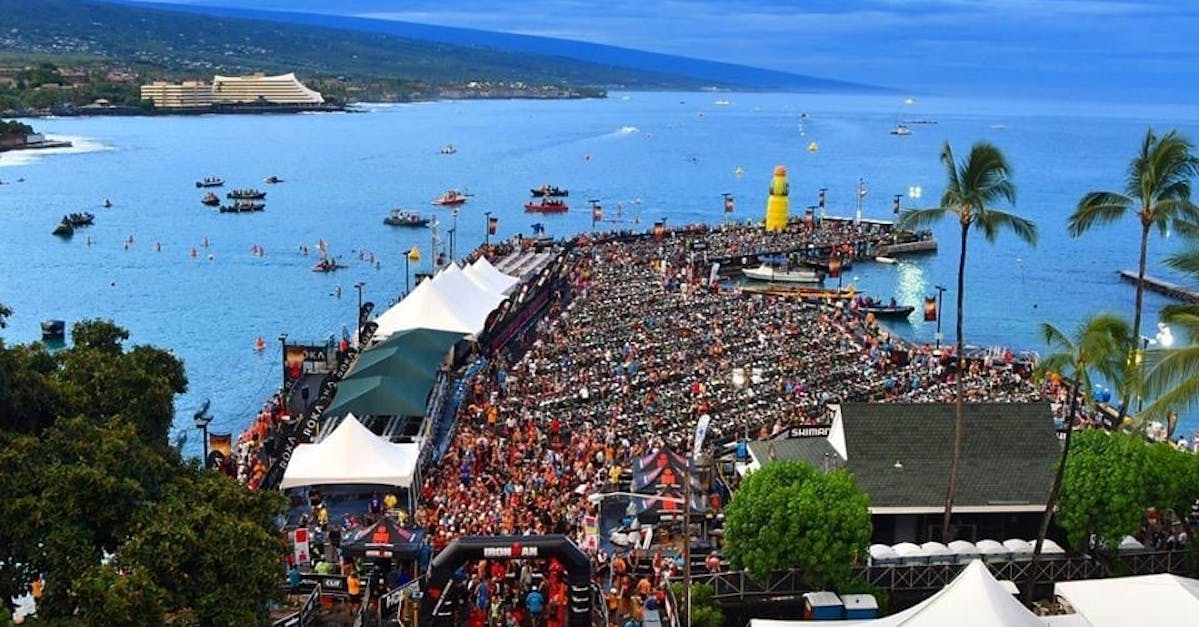
Earlier this month, we talked to Ed Performance Team ambassador, Chris Wallace about his preparations for one of the toughest races in the world, The 2018 IronMan World Championships in Kona, Hawaii. Now read his amazing tale of what completing this incredible race entailed…
Just over a week’s gone by since I crossed the Ironman World Championships finish line, but the events, emotions, and experiences from the day still remain fresh in my mind.
After training for the past nine months with this event firmly fixed in my sights, I felt probably the most relaxed that I’ve been before a race. I knew I’d prepared well and was thankful that I arrived fresh, healthy and injury-free.
Race week
Stepping down on to runway at Kona Airport, I smiled as the heat and humidity swept over me. I realised that despite the numerous indoor and sauna sessions, racing in these conditions would be my biggest challenge yet.
Staying just outside of the main Kailua town meant that I was able to enjoy the many fun pre-race events and being able to escape to a quieter part of town when I wanted to switch off and avoid the hustle and bustle of race week. The atmosphere in town was electric and I tried to embrace and take it all in on my first trip to the Big Island. There are many festival-like events for participants and spectators alike, including Breakfast with Bob, the Underpants Run, the Parade of Nations and a large Welcome Banquet.
However, I’d been warned that many athletes leave their races out on Ali’i Drive, overtraining during the week before. I knew the hard work was done and so limited myself to easy rides out on the Queen K, short runs in town and short morning swims from the pier to allow myself to try and get used to the heat, humidity and winds without building too much fatigue.
It was great meeting and hanging out with other athletes from the Great Britain team and also my hometown’s Warringah Tri Club. I was lucky enough to meet and get pre-race tips from many of my triathlon heroes, including Dave Scott, Jan Frodeno, Lionel Sanders and Jesse Thomas. It was hard not to be a little starstruck.
However, the perfect pre-race booster came with the arrival of my parents on Thursday evening. Having not seen them since my departure from the UK in January, it was fantastic catching up with them and knowing they’d be out supporting me on the course on Saturday!
As I checked in my bike on Friday and dropped off my kit bags, I felt excited to put my months of hard work into action, testing myself against the best triathletes in the world in some of the toughest conditions!
Swim
I won’t deny that of all the three legs, the swim was the one that made me most nervous. A mass-start sea swim with no wetsuit would represent the toughest swim conditions I’d ever faced. However, I resolved to stay calm and hone-in on two key elements that had often eluded me in the past: taking a good line through regular sighting, and focussing on good form and timing without resorting to thrashing.
I made sure to relax and take in the thousands of spectators in the minutes leading up to the start, and as the cannon-blasted set about getting into my rhythm. The mass-start meant that the first 2KM resembled a washing machine, with a melee of arms and feet. However, I slowly worked my way forward, finding little pockets of clear water I could slip into. I felt relaxed and rhythmic and when I checked my watch at the turnaround, was delighted to see I was under 30 mins.
Knowing that I was on target for a good swim time (for me), I relaxed on the way back, and enjoyed the swim as the packs thinned out and I could enjoy more clear water. Finding a few sets of good feet to follow, allowed me to exit the water in just over 1hr 3mins (an IronMan Swim personal best for me) feeling relatively fresh. A great start to the day…
Bike
Mounting the bike, I reminded myself to stay relaxed and easy for the first 30 mins. It was going to be a long day and I knew that the best approach would be to let my heart rate settle and body to adapt, rather than letting my ego get the best of me and chasing after those who came flying past. A great tip I’d received from Dave Scott during the week, was to wait until 15-20 mins into the bike before taking on fluid or food, to avoid placing additional stress on your stomach during this adaptation phase.
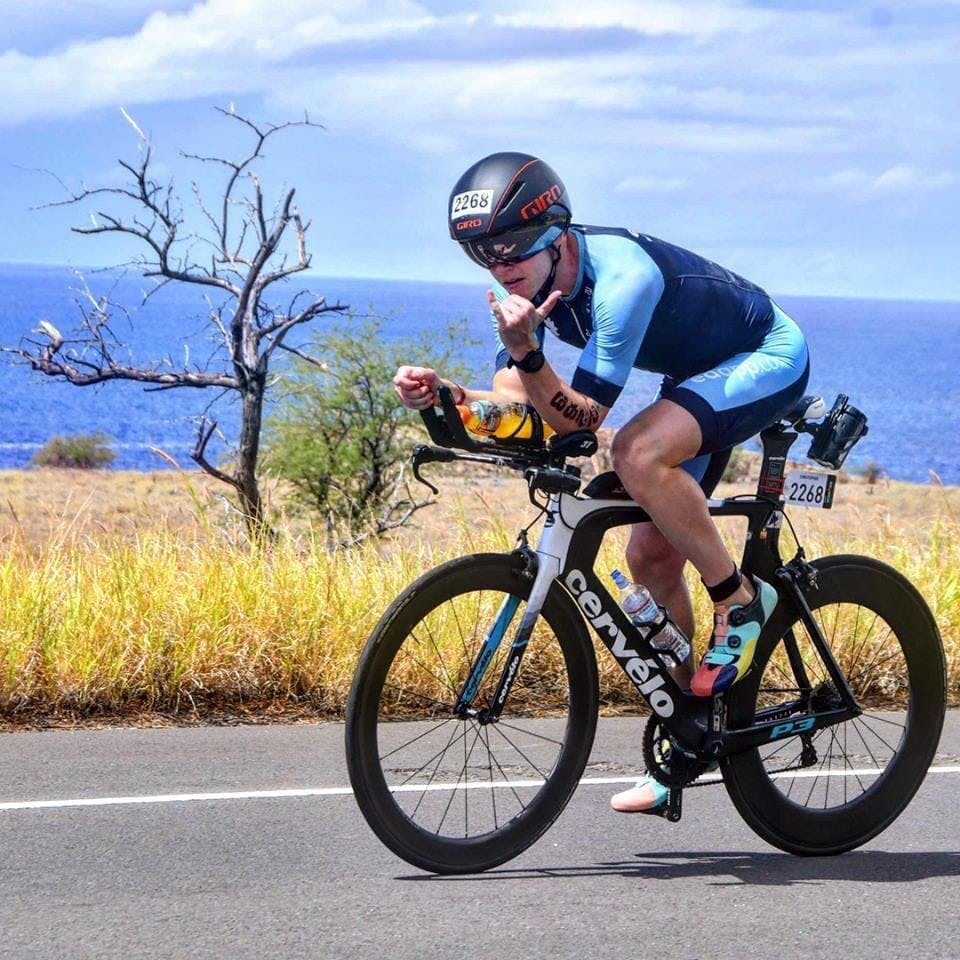
For the first 30 or 40KM, while my legs felt good, I couldn’t help but be stressed by the sheer number of riders on the road. The nature of the World Champs means that a huge number of athletes come out the water between 60 and 70 minutes, meaning a vast number start the bike segment together. With a 12m draft zone in place, I was paranoid about being given a penalty for drafting, particularly with so many bikes bunched together. It was impossible to overtake the long lines of riders, and impossible to drop back 12 metres due to number of riders behind me. Sure enough, after about 20KM my worst nightmare came true and I was shown a blue card and given a 5-minute stop and go penalty. This was incredibly frustrating as the officials seemed to be handing them out arbitrarily, penalising me and other riders for unavoidable drafting, but allowing huge pelotons of riders to come fly past me at 40KM.
As I pulled into the penalty tent at 50 km, I was shocked to find about 35 other riders, all of whom had experienced the same common theme. However, I resolved to stay calm and not to chase the race and to stick to the plan. I wanted to be strong on the run and pushing too hard on the bike would come back to bite me.
The one advantage of the penalty was that the road seemed much more open ahead, and I was able to get into a rhythm and slowly work my way through the field. The bike course is undulating, and I knew that my strength in climbing would allow me to spin up the hills with less exertion than the heavier athletes. As I came to the turnaround at the end of the climb to Hawi I noted that I was at about 2hrs 35min, a split I’d have been happy with even without the 5 minute penalty. I felt relatively good and in control and I knew there had been a slight headwind on the way out. With a tailwind combined with a strong steady effort, I knew I was on for a good split.
The descent from Hawi is infamous for its hairy rosswinds, which have literally blown riders off the road in the past. I was delighted to find that the triathlon gods had smiled on me, and no such crosswinds appeared allowing me to get into a nice aero tuck and cruise down the descent.
One aspect of the Kona bike course that was phenomenal was the seamless nature of the aid stations and the unbelievable volunteers who manned them. I felt like I was cruising through an F1 pit lane as the volunteers paced their run and hand position perfectly to hand me a bottle at speeds of upwards of 30KM/h! This allowed me to ensure I stayed on top of my nutrition and electrolytes throughout the bike course. It’s easy with the cooling effect of the wind rush not to notice your body heating up on the Queen K. However, I knew I was liable to sweat more than most people, and so was vigilant of staying on top of it that would prove crucial later on.
The ride back felt great. Having worked a lot on my aero position, including getting fitted by an expert in Richard Melik at Freespeed, I felt like I was able maintain an optimal combination of comfort, aerodynamics and an ability to put out power. This combined with a nice tailwind meant that I was delighted to find that I arrived in T2 right on 5hrs, my pre-race goal. More importantly, I didn’t feel like I’d overcooked myself, and so I slipped on my trainers, visor and sunglasses and readied myself for a marathon through the lava fields…
Run
I set out on the run at a very quick pace, coming through 5K in 21 minutes. It was very easy to get carried away as I passed support from my parents and friends. As I turned around at the end of All’i and the wind died down, I realised that I would need to ignore pre-race targets and focus instead on maintaining form, while ensuring that I cooled down and hydrated at every chance.
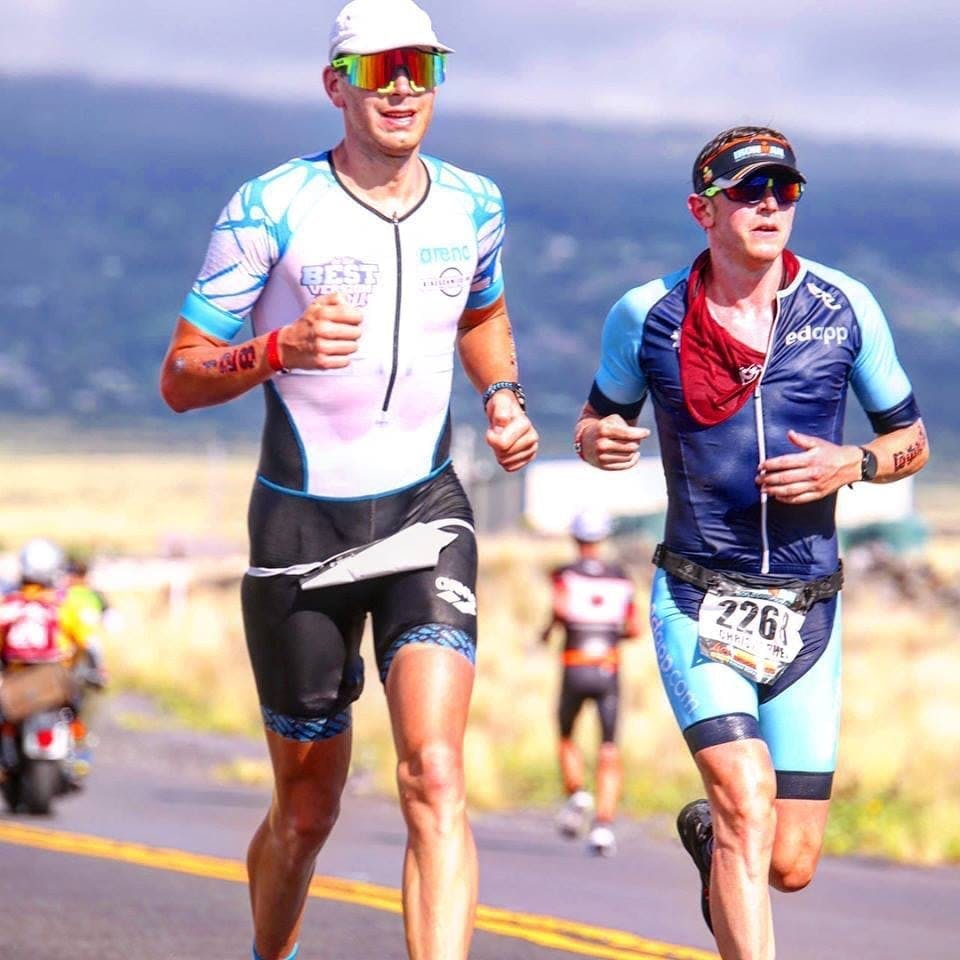
As I crested the top of the Palani hill, I changed my watch display from pace to heart rate to ensure that I didn’t blow up while obsessing about times. Running on the Queen K is infamous for being a relentless hot and humid slog through the lava fields. However, I found that psychologically it was very motivating. Confident that I would be one of the fastest age group runners and being able to see a stream of runners for a few kilometres ahead, allowed me to focus on gradually working my way through the field. As I ticked off the checkpoints – 10KM, 15KM, 20KM – I knew I was making serious progress through the age-group rankings.
The toughest point was to come as we turned left at about 25KM and descended down into the Energy Lab (Kona’s name for The Wall). The wind from the Queen K disappeared and I felt like I was in an oven. For the next 8K, I focused on doing anything I could to cool down: ice down my tri-suit, cold water over my head, cold towels around my neck, cold sponges tucked into my visor – nothing could distract from what felt like an oven. The climb back up to the Queen K is probably the toughest stretch of road I’ve ever run and I’ve never been so resolved to feel a breeze on my back as I turned back onto the Queen K.
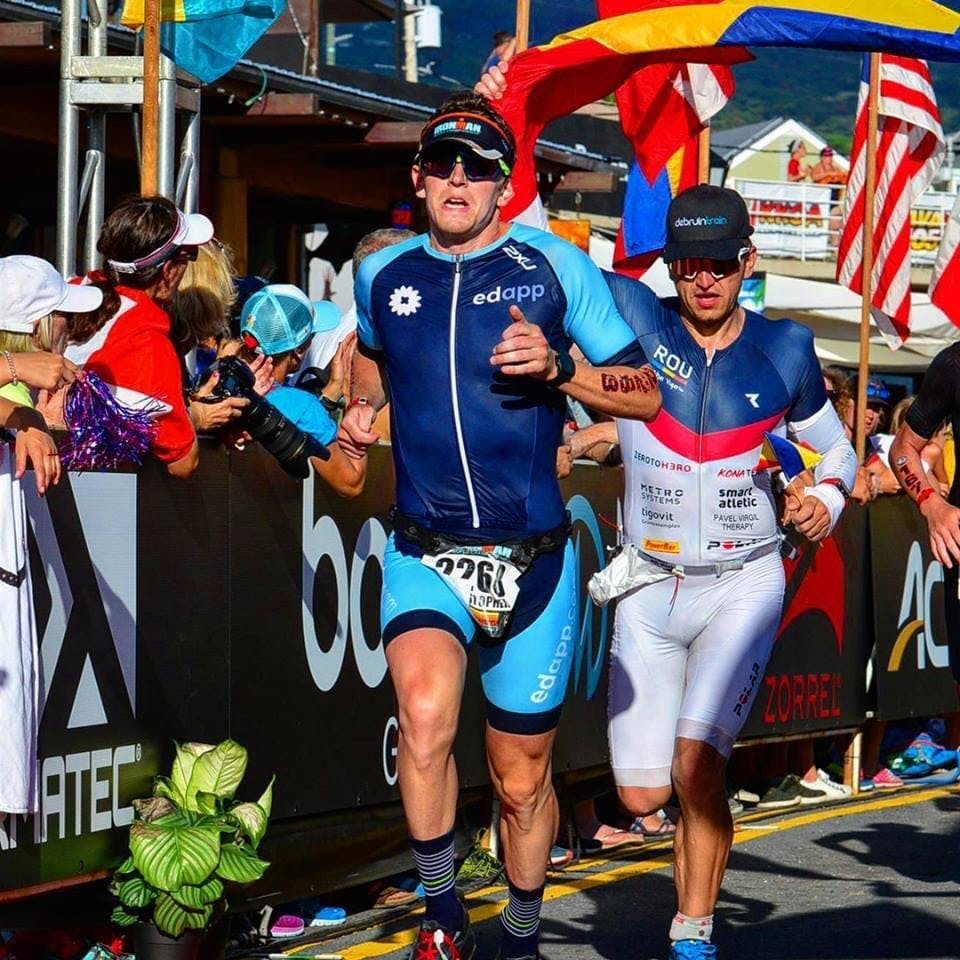
With 12KM now left to go, I knew I really needed to dig in. I was fortunate to join up with an Irish triathlete who seemed to be moving at a good pace. We ran together, matching footfall and sharing a bit of gallows humour. Together we continued to work through the racers ahead. I knew we would be on for a sub 9hrs 30mins result if we could keep it together and this helped to push us on.
As we turned right off the Queen K and towards the finish, I was determined to push for a strong finish. Emptying the tank with one last surge for the final two kilometers, I was hit by a wave of noise as I hit Ali’i with the finishing stretch swamped by supporters on either side. I was barely able to make out my parents cheering as I rode a wave of exhaustion and elation over the finish line!
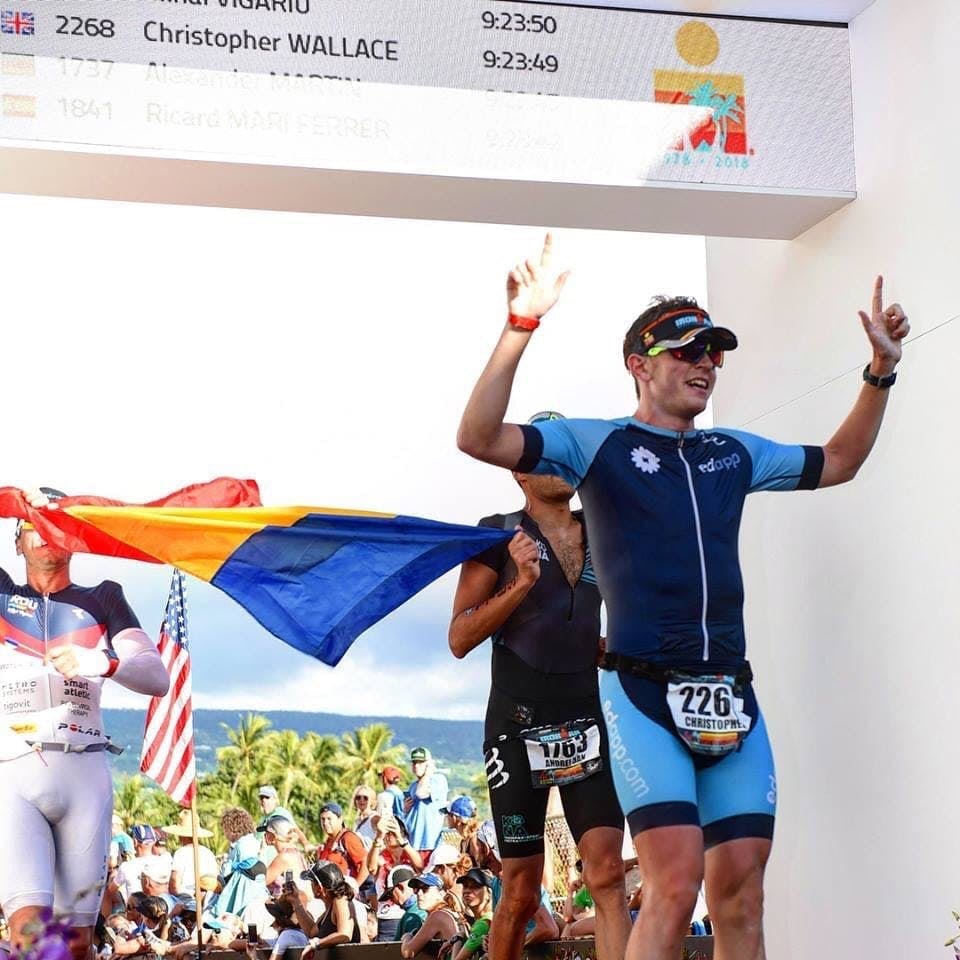
I checked my watch to see that I’d completed the run in 3hrs 10mins and the race in 9hrs 23mins, a time that put me in 35th place in my age group. I was absolutely delighted, but completely spent. Two volunteers quickly realised this as they rushed to support me, effectively propping me up all the way to the post-race pizza and ice cream tent…
Final thoughts
All in all, I’m incredibly happy with my first experience in Kona. First-timers’ tales are littered with stories of mid-run meltdowns and medical tents, but I feel like I executed my race plan calmly and to the best of my ability, allowing me to leave it all out there in the final stretches of the run.
The experiences and events of the week and race day itself will live long in the memory with the fantastic supporters, volunteers and athletes that I raced with. The trip to Kona has definitely given me a taste for more and I hope to take on the Big Dance again at some point in the future.
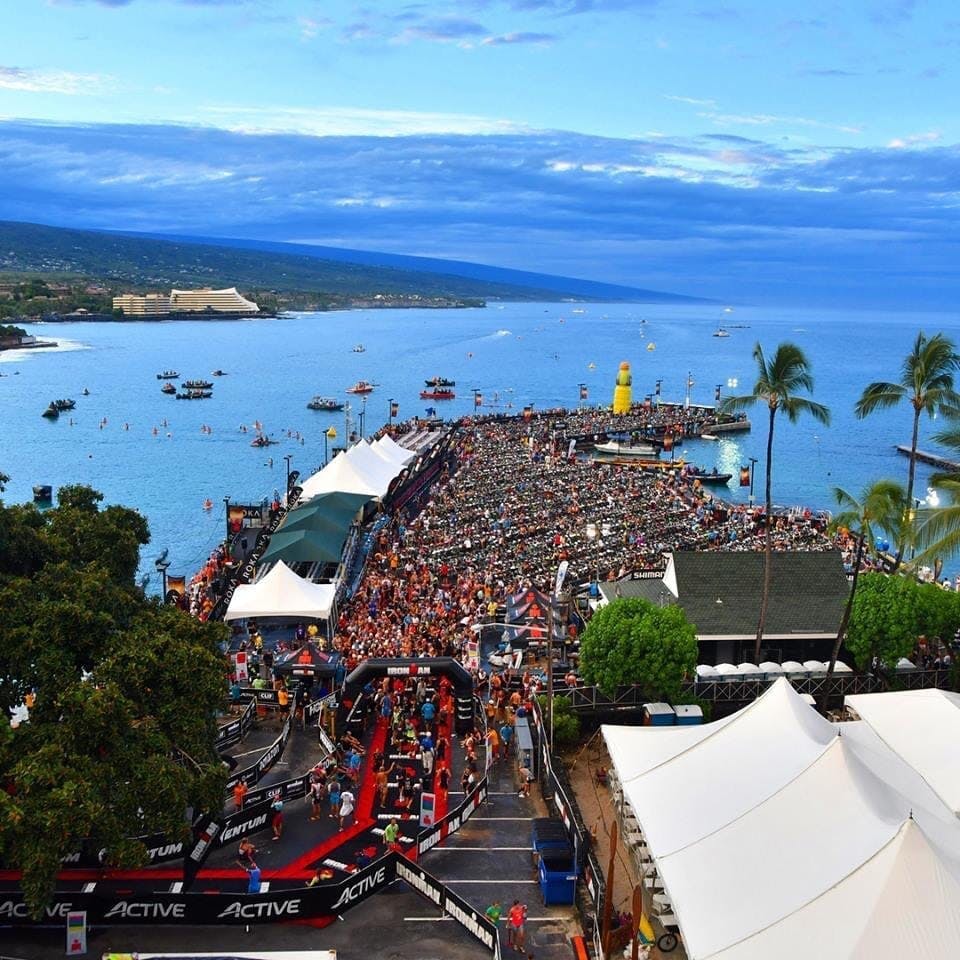
However, I’m looking forward to some long-awaited downtime before trying other events as I focus on preparations for the 2019 70.3 (Half-Ironman) World Championships in Nice and my first taste of ultra-trail running with the UTA 50km race in Sydney’s Blue Mountains.
Maholo for reading!
Curated course examples
Author
Guest Author Daniel Brown
Daniel Brown is a senior technical editor and writer that has worked in the education and technology sectors for two decades. Their background experience includes curriculum development and course book creation.
